Sept. 7 show - encore presentation
Pioneer music in early Indiana
The jaw harp was popular. So were the fiddle and dulcimer. Community bands played flutes, whistles and drums.
There even were pianos before 1840 in Indiana, despite the significant challenges of transporting them to frontier communities via horse-drawn vehicles and river boats.
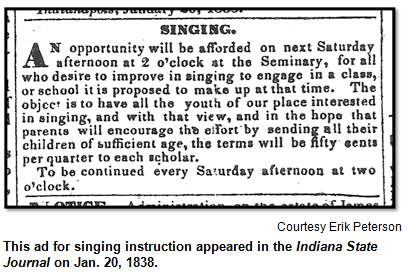 Musical instruments that weren't widely seen (or, in some cases, not present at all) in the Hoosier state of the 1820s, '30s and '40s: the guitar, banjo, harmonica, mandolin, ukulele and accordion.
Musical instruments that weren't widely seen (or, in some cases, not present at all) in the Hoosier state of the 1820s, '30s and '40s: the guitar, banjo, harmonica, mandolin, ukulele and accordion.
To explore all aspects of the music played by pioneer families in Indiana, Nelson is joined in studio by Erik Peterson, an Indianapolis-based musician and historian, on this encore show. (The original air date was Jan. 26, 2013.) Erik has performed at Prairietown at Conner Prairie Interactive History Park and at other history-focused sites.
"Keep in mind that, during the pioneer era, Mozart had not been dead for as long as Buddy Holly has been gone today," Erik says.
He has researched pre-1840 music of central Indiana for a postgraduate degree, thanks in part to a fellowship from the Society of Indiana Pioneers. Adept at various instruments, Erik often performs traditional Irish, American folk and Celtic music with various ensembles, including Hogeye Navvy, an Indy-based band known for sea chanteys.
During our show, he performs a few musical interludes to convey a flavor of the music heard in pioneer Indiana. He has gained insights by tracking down diaries, letters and journals of pioneer families.
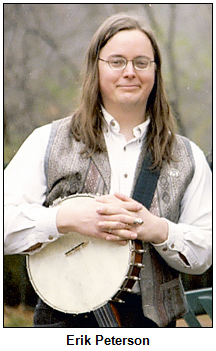 "People in that era were incredibly musical," he says. "Music was a daily part of their lives, and it served as a way to build community among neighbors."
"People in that era were incredibly musical," he says. "Music was a daily part of their lives, and it served as a way to build community among neighbors."
The jaw harp, a hand-held instrument about the size of a harmonica, was played frequently. Erik performs a tune on the instrument during our show, a rare opportunity to hear it. He notes the jaw harp primarily is relegated today to the soundtracks of cartoons.
"The fiddle was king of instruments here during the pioneer era," he says. "It’s loud, and it's portable."
As Hoosier History Live! guests discussed during a show last month about Switzerland County and Life on the Ohio River, the first piano was brought to Indiana in the early 1800s; the historic instrument is exhibited today at Switzerland County Historical Museum in the far-southeastern county on the Ohio River.
The extraordinary efforts undertaken to transport pianos here decades before railroads underscores the importance of music in the lives of pioneers, Erik emphasizes. He points out that many pioneer towns in Indiana even had community bands.
Like later generations, early settlers differed along gender lines when playing musical instruments. But the gender preferences often were reversed from those that unfolded later, Erik says. Many men tended to play flutes and violins, while women played guitars and banjos once those instruments finally made their way to Indiana, primarily after the Civil War.
Before that, advertisements for academies such as the Indianapolis Female Institute touted instruction in piano for young women.
During our show, Erik plays a few verses of a song that would have been played frequently in early Indiana: Hail, Columbia!, the unofficial national anthem of the era. The Star Spangled Banner was not adopted as the official national anthem until 1931, about 100 years after the era that is the focus of our show. Since then, Hail Columbia! primarily has been played to introduce the American vice president.
Roadtrip: Wabash and Erie Canal Park in Delphi
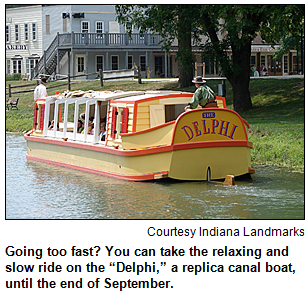 Guest Roadtripper Glory-June Greiff, Indianapolis public historian, has made the day trip several times to the old canal town of Delphi in Carroll County, about 15 miles northeast of Lafayette.
Guest Roadtripper Glory-June Greiff, Indianapolis public historian, has made the day trip several times to the old canal town of Delphi in Carroll County, about 15 miles northeast of Lafayette.
There's plenty of hiking and history at the Wabash and Erie Canal Park in Delphi, which is open year-round and includes an Interpretive Center, lots of trails for hiking and biking, and canal boat rides that continue through the end of September.
Don't miss the Latrrope and Ruffing Opera House and adjacent shops. Glory-June also has an eye for great small-town restaurants; she says Delphi has the Stonehouse Restaurant and Bakery. And for your dining pleasure either coming or going, there is Treece Restaurant in Rossville.
History Mystery contest on Facebook
Harps of all kinds are built in a factory that has become a tourist attraction in a small Indiana town. Located in a former speakeasy, the factory building also includes a venue for concerts of harp music. The family-owned business makes instruments ranging from large symphonic harps to smaller harps, which they call "harpsicles," that are made in an array of colors. The former speakeasy-turned-harp factory is located on Main Street in its scenic hometown.
Question: Name the Indiana town. Since this is an encore show, you won't be able to call in. But if you are the first person to post the correct answer on the Hoosier History Live Facebook page (reference History Mystery in your post), you will win a gift certificate to Le Peep Restaurant, courtesy of Visit Indy, as well as a pass for four to the Indiana Experience at the Indiana Historical Society. You must also be willing to supply your postal address so the prize can be mailed to you.
Your Hoosier History Live! team,
Nelson Price, host and creative director
Molly Head, producer, (317) 927-9101
Richard Sullivan, webmaster and tech director
Pam Fraizer, graphic designer
Garry Chilluffo, creative consultant
Michele Goodrich, Jed Duvall, grant consultants
Joan Hostetler, photo historian
Dana Waddell, volunteer-at-large
www.hoosierhistorylive.org







Please tell our sponsors that you appreciate their support: Broad Ripple Historic Home Tour | Indiana Historical Society | Lucas Oil | Re/Max Metro | Story Inn | The Fountain Square Theatre Building | The Legend Classic Irvington Cafe
 Acknowledgments to Print Resources, Monomedia, Indiana Humanities, Visit Indy, WICR-FM, Fraizer Designs, Heritage Photo & Research Services, Derrick Lowhorn and many other individuals and organizations. We are an independently produced program and are self-supporting through organizational sponsorships, grants and through individual tax-deductible contributions through Indiana Humanities. We do not receive any government funding. Visit our website to learn how you can support us financially.
Acknowledgments to Print Resources, Monomedia, Indiana Humanities, Visit Indy, WICR-FM, Fraizer Designs, Heritage Photo & Research Services, Derrick Lowhorn and many other individuals and organizations. We are an independently produced program and are self-supporting through organizational sponsorships, grants and through individual tax-deductible contributions through Indiana Humanities. We do not receive any government funding. Visit our website to learn how you can support us financially.
Sept. 14 show - online-only encore presentation
Cuban immigration to Indiana
Hoosier History Live! will be pre-empted on WICR-FM so the radio station can broadcast Yom Kippur services Sept. 14 from the Indianapolis Hebrew Congregation. Even though you won't be able to tune in and listen to us over the airwaves, as a special treat we will make available - on our website and by clicking on a link embedded in our e-newsletter - one of the most popular programs from our Hoosier History Live! archives.
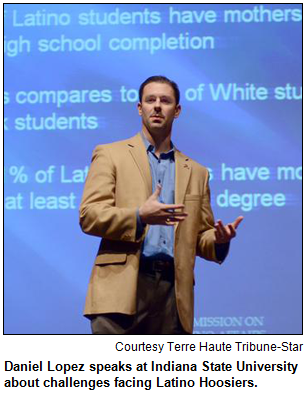 The featured program will be a show in our rotating series about ethnic immigration to the Hoosier state. We have explored our German, Irish, Italian, Greek, Scottish, Brazilian and even our Sikh heritage in Indiana, among others, during our five-and-a-half years on the air.
The featured program will be a show in our rotating series about ethnic immigration to the Hoosier state. We have explored our German, Irish, Italian, Greek, Scottish, Brazilian and even our Sikh heritage in Indiana, among others, during our five-and-a-half years on the air.
To explore Cuban immigration to Indiana, Nelson is joined in studio by Danny Lopez, who was executive director of the Indiana Commission on Hispanic/Latino Affairs when this show originally was broadcast on May 26, 2012. All four of Danny's grandparents left Cuba in 1960, fleeing political and economic upheavals.
Since he shared intriguing details about our state's Cuban heritage on this show - including identifying Fort Wayne and South Bend as the cities that have had the most concentration of Cuban immigrants - Danny has a new job title, although he remains an administrator with state government. Since the election of Gov. Mike Pence, Danny has been special assistant to the governor.
During our show, he notes that the number of Hoosier with Hispanic/Latino heritage has nearly doubled since the turn of the new century, climbing to 389,000, according to the 2010 U.S. Census. About 85 percent are of Mexican heritage. 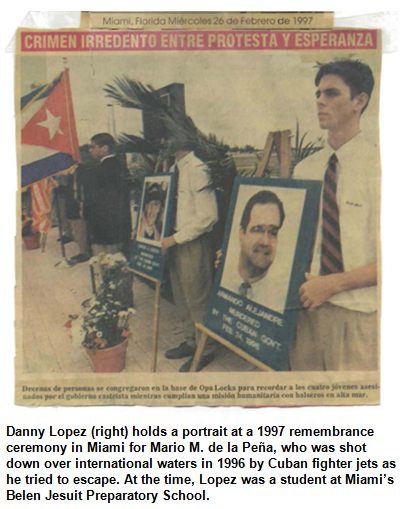 The next largest ethnic groups of Hispanic/Latino heritage in Indiana, according to Danny, are Puerto Ricans, followed by Cubans.
The next largest ethnic groups of Hispanic/Latino heritage in Indiana, according to Danny, are Puerto Ricans, followed by Cubans.
Cuban-Americans here (there are 4,300 of them, Danny reports) differ from their counterparts from other Latin homelands in several ways.
He attributes the concentrations of Cubans (for several generations) in South Bend and Fort Wayne to, respectively, the University of Notre Dame and to Catholic parishes in Fort Wayne that assisted Cuban families, including children during the early 1960s who were evacuated because of the Fidel Castro regime. In terms of the overall Hispanic/Latino population, the largest concentrations are in Indianapolis and in Lake County.
Danny has been a Hoosier since 2008. He grew up in Miami and graduated from an all-male, Jesuit-run preparatory school there that had been attended by his ancestors in Havana. Danny's wife, Sofia, also is Cuban-American; her grandfather graduated from Notre Dame.
© 2013 Hoosier History Live! All rights reserved.